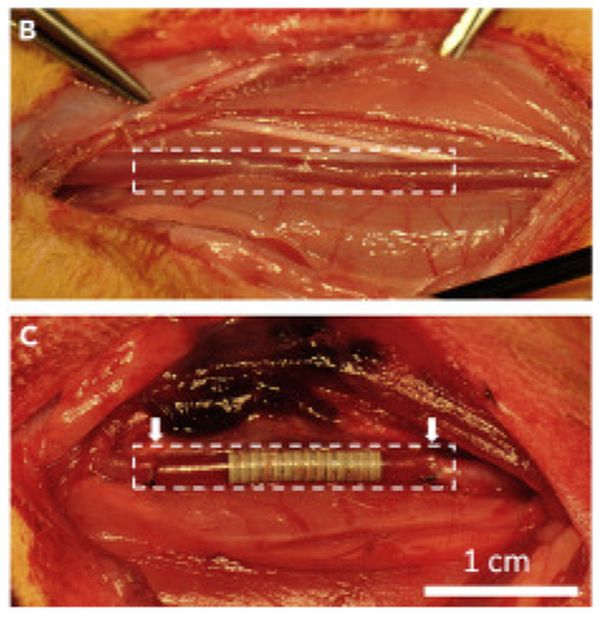
In a joint effort, researchers at China and Switzerland have developed electronic blood vessels that mimics their natural counterparts. Most of the times, some foreign agent when implanted within the human body display uncertain behaviour. Incompatibility is a critical issue and at times, it often leads to tissue trauma.
Therefore, to order to make foreign implants biocompatible, researchers have fabricated vessels from metal-polymer conductor membrane. It not only is flexible but also biodegradable. When implanted in (rabbit) in-vitro experiment, the electronic blood vessels showed promising results in replacing key arteries.
Previous TEBVs had its limitations
In a previous research where tissue engineered blood vessels (TEBVs) were developed had its limitations. Natural blood vessels when undergoing cure are able to regenerate themselves however, the TEBVs did not show similar outcome.
Furthermore, host wasn’t responsive either. Artificial blood vessel tissue often leads to inflammation during the flow of blood. Hence, existing small-diameter TEBVs would not be enough to meet the ‘high pressure’ requirement of heart systole.
This time researchers not only included the natural blood vessel-mimicking structure but also added more comprehensive electrical functions so that treatments could be imparted, if required, in the future.

Combined living cells with electronics
To develop biodegradable electronic blood vessels, Jiang and team used metal-polymer conductor membrane fabricated from poly(L-lactide-co-ε-caprolactone). When electrical stimulation was introduced, they observed the proliferation of that blood vessel.
Endothelial cells are the squamous cells that form the inner lining of blood vessels, when these cells begin to multiply into the surrounding matrix, it’s called the proliferation of blood vessels. This process is a part of curative technique of blood vessels.
Researchers noticed that electrical stimulation, in the lab, increased the development of new endothelial blood vessel tissue.
For flexible circuitry, they had also embedded the blood vessels’ with an electroporation device. It initiated an electric field for the permeability of cellular membranes.
Both these technologies together delivered green fluorescent protein (GFP) DNA into three kinds of blood vessel cells in the lab.

Electronic blood vessels in rabbits’ carotid arteries
When the same device was implanted in carotid arteries in New Zealand rabbits, researchers observed that the device enabled enough blood flow throughout the required duration.
Imaging tests using X-rays and dye also proved the same point. Artificial arteries functioned quite similar to their natural counterparts. There was no sign of narrowing down, diametrically.
Rabbits’ internal organs were also examined after three-month period, from the time, implant was removed. There was no evidence of any sort of inflammation, which proved the efficacy of the new biodegradable electronic blood vessels.
Takeaway
Although it looks promising on rabbits’ arteries but still it has to cover huge distance as far as implantation in human is concerned. The innovation then would surely give an exponential boost in improving drug delivery and tissue formation.
Researchers also envision this tech in combination with AI will assist in collecting and storing data on an individual’s blood velocity, blood pressure and blood glucose levels.
Via: Cell Press and Science Daily



